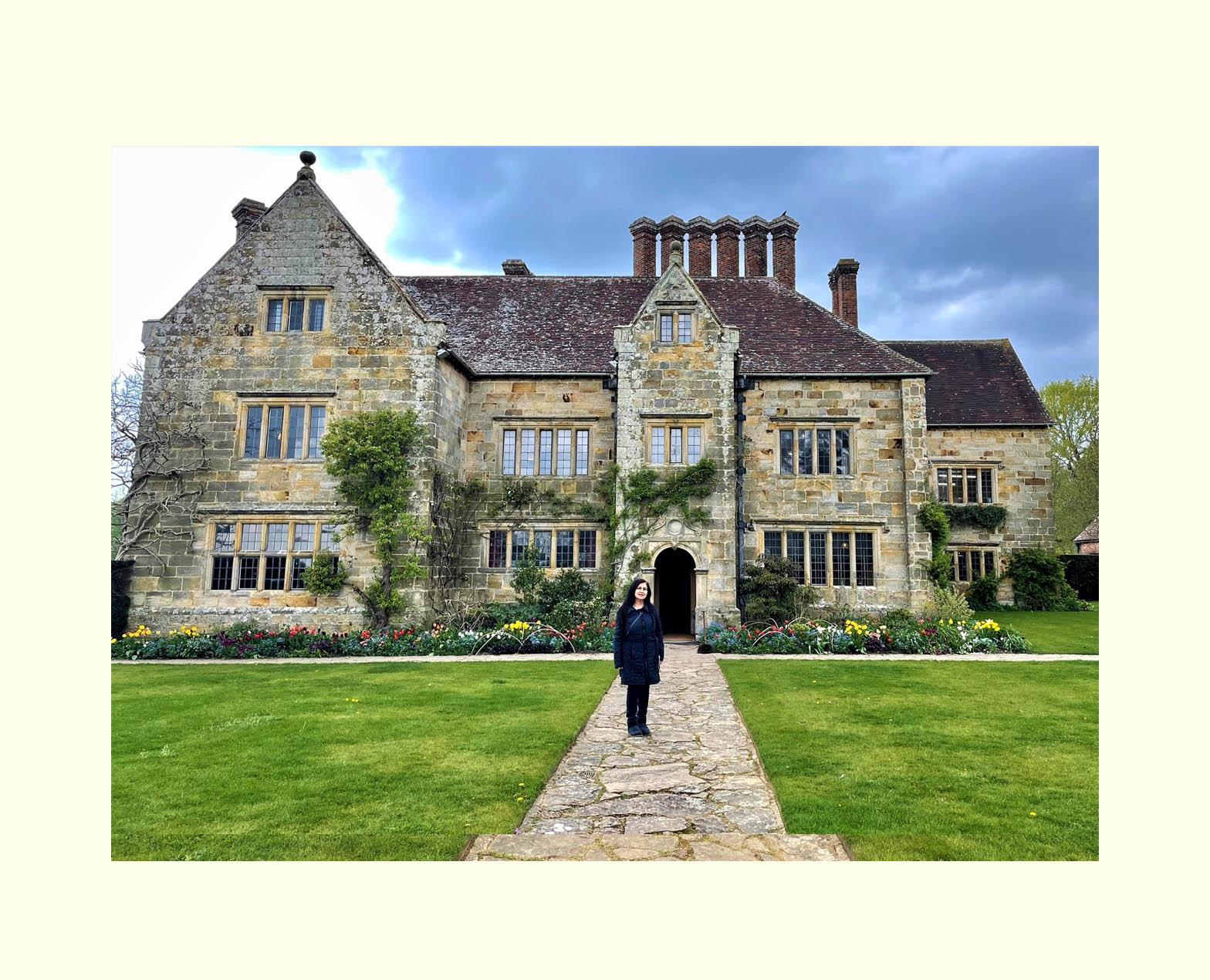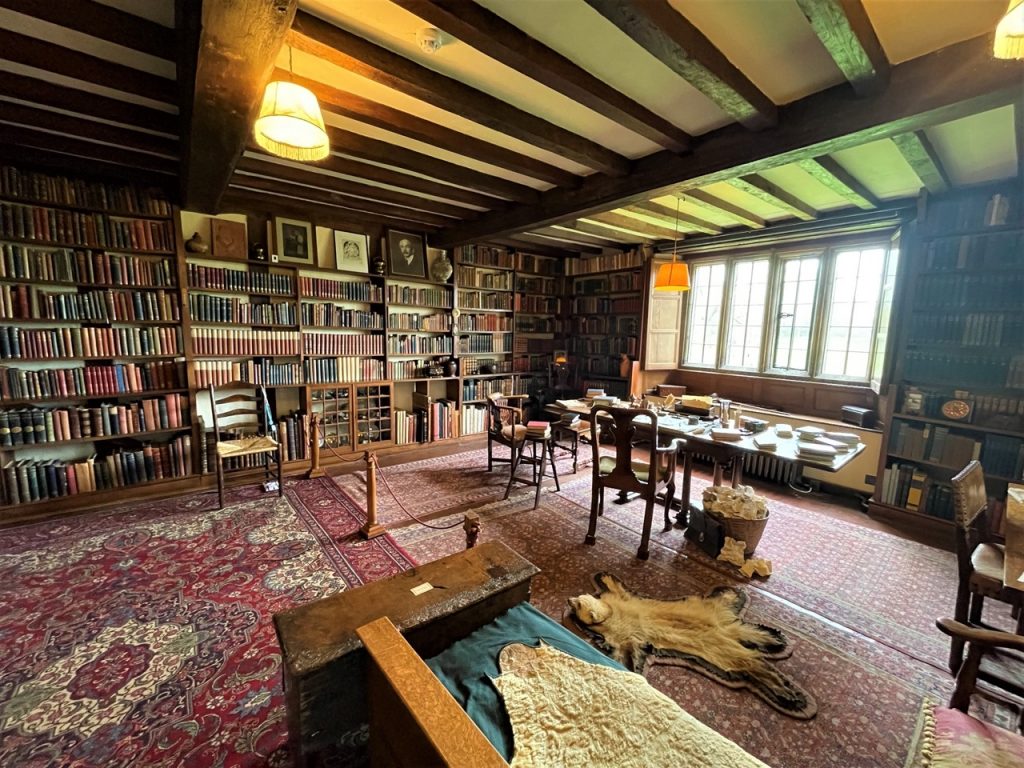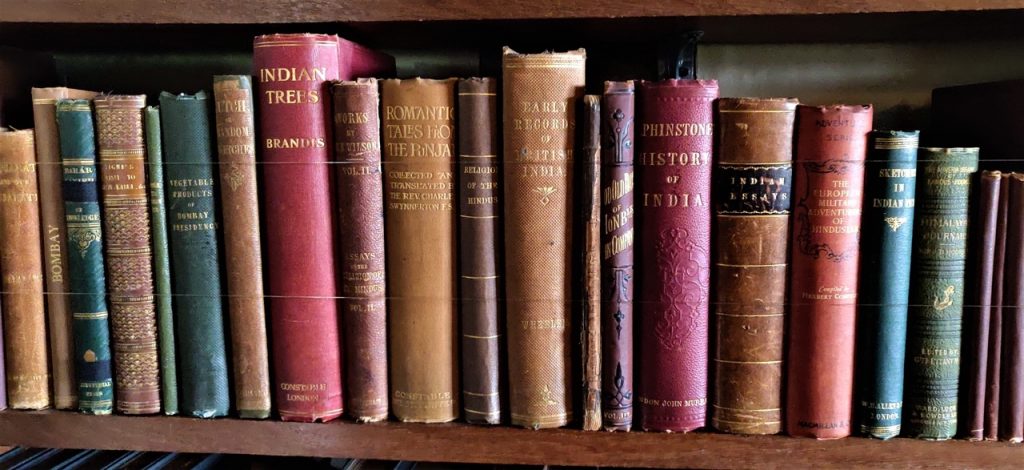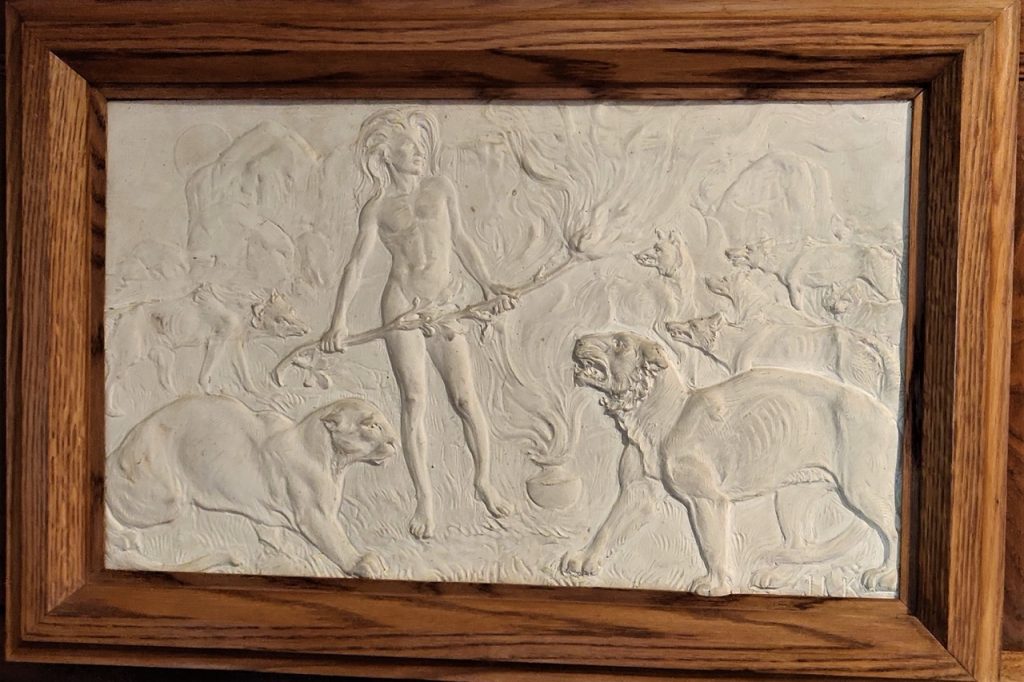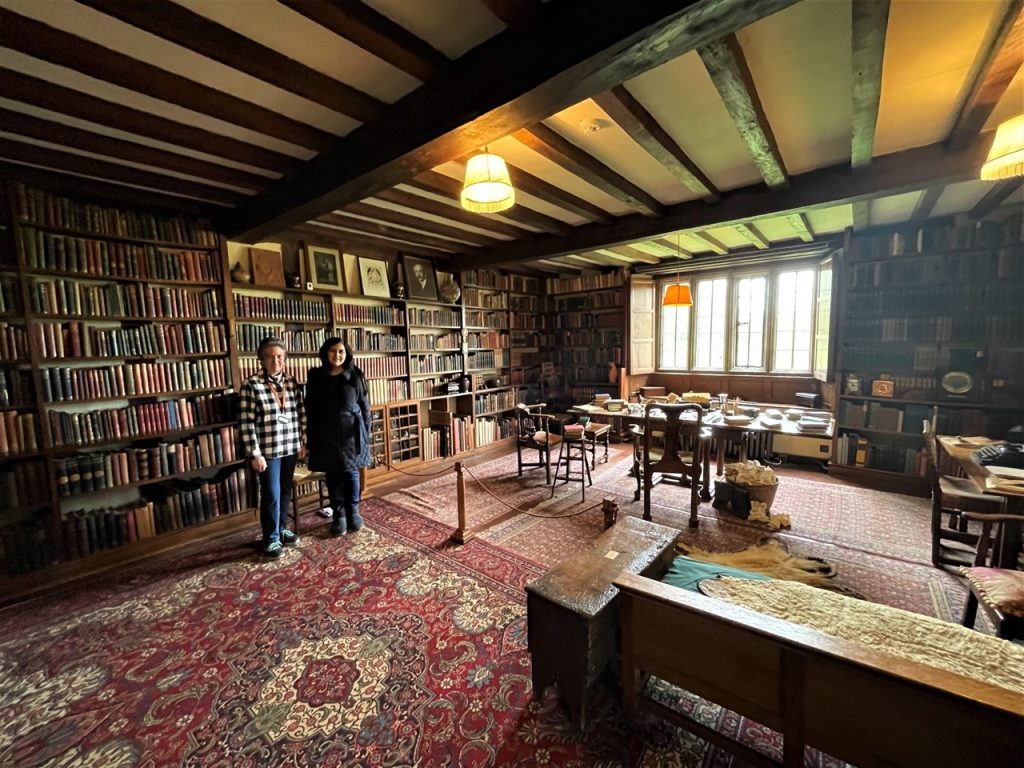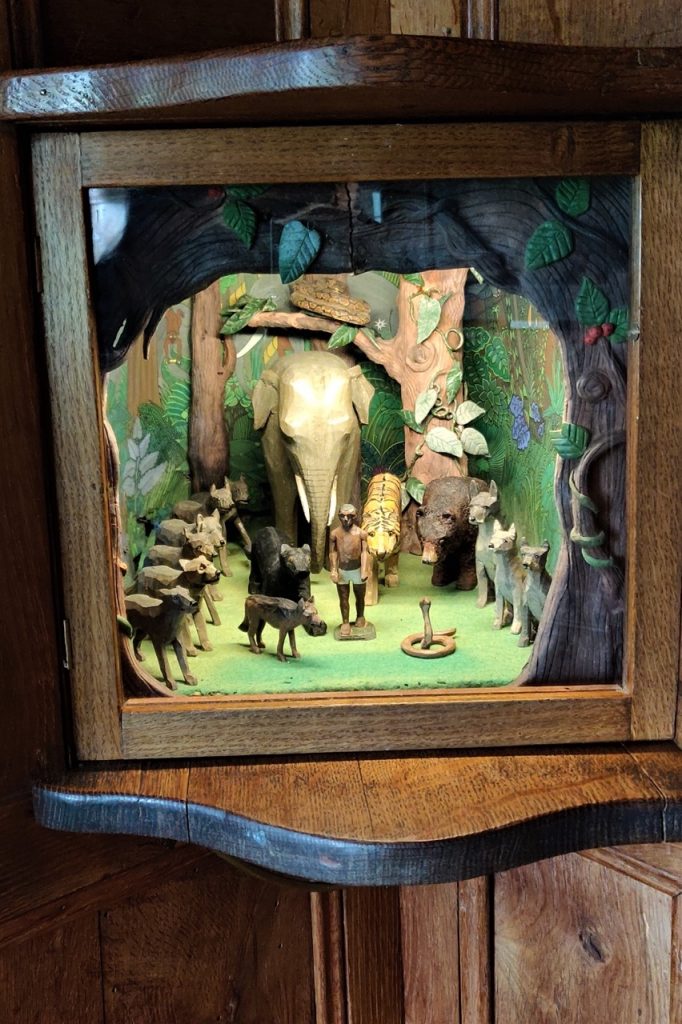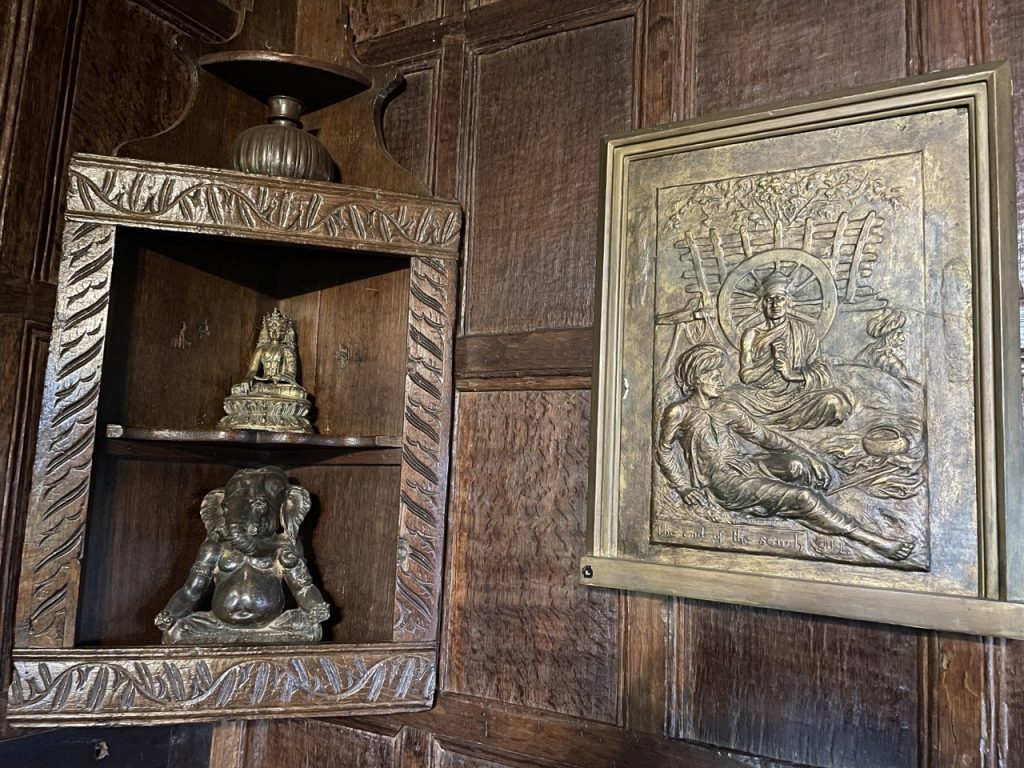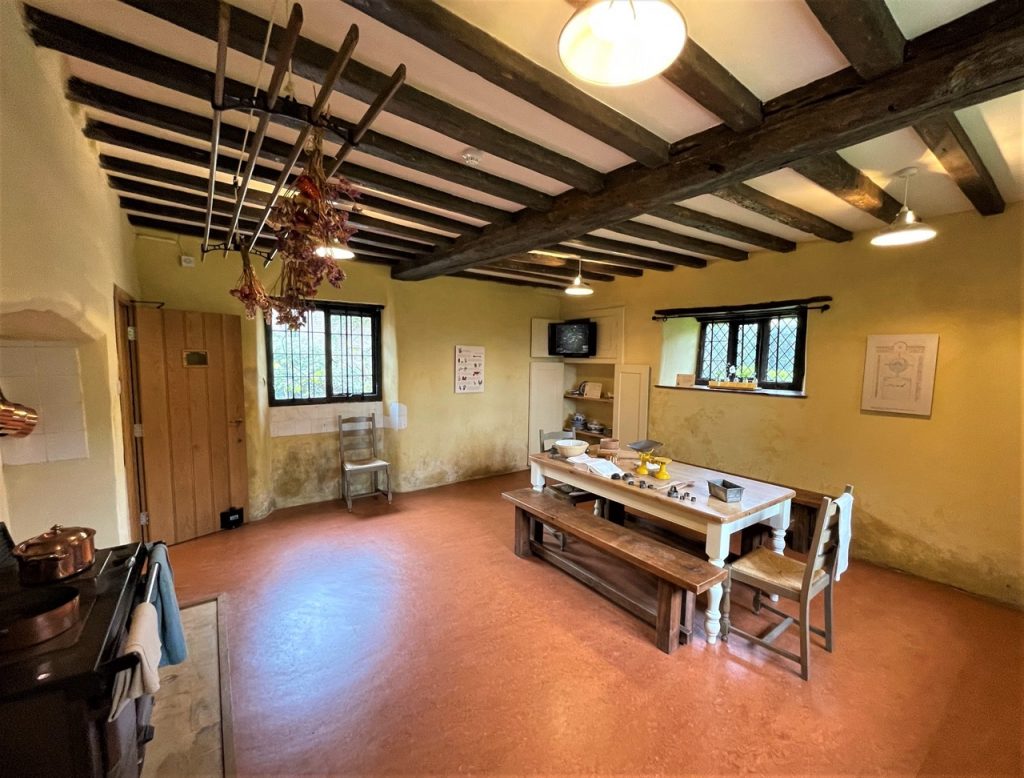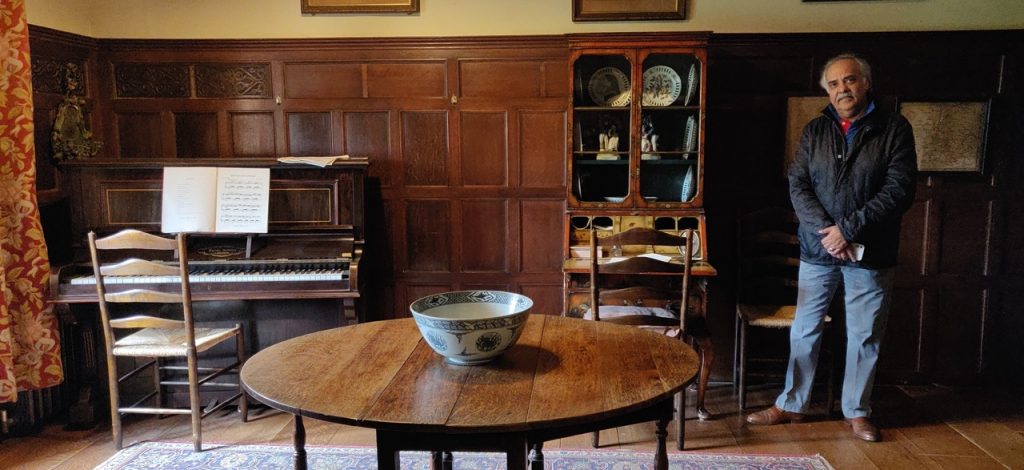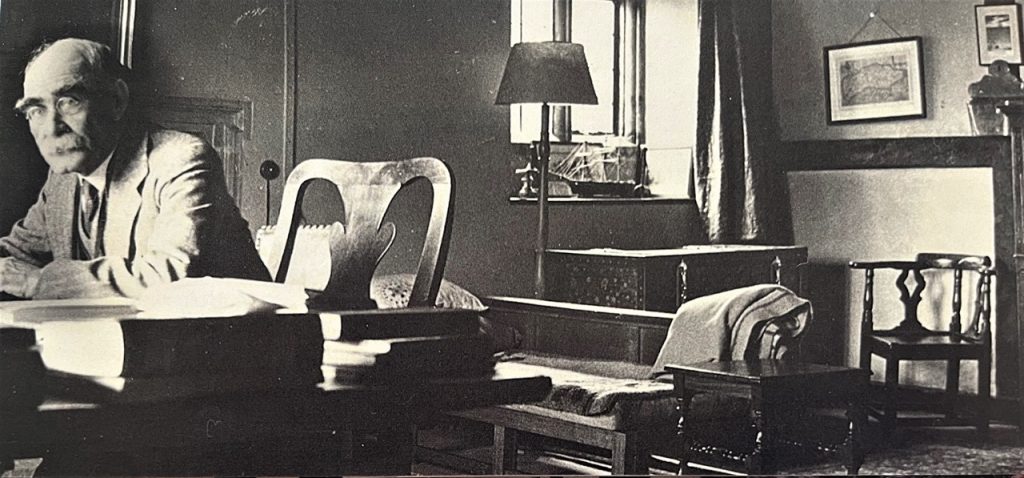Bombay born English Writer Rudyard Kipling at Bateman family Home
Rows of blossom laden trees with pristine white flowers set upon emerald green grass and a backdrop of sapphire blue sky, on a gentle slope greeted our eyes as we entered the vast gardens of celebrity English writer, journalist & novelist Rudyard Kipling ‘s home-Batemans where he came to live in 1902. We continued walking towards the 300 years old Bateman’s home where he composed many of his literary works and went on to win a Nobel Prize in Literature in 1907! Born in Mumbai, writing in Allahabad, Shimla and America, Rudyard Kipling finally settled at this home in England. Jungle Book, Just So Stories, Under the Deodars, Kim, Plain Tales from Hills and many more are reminders of Rudyard Kipling’s brilliant literary works read and reprinted till today!
Study of a Prolific Writer
Having explored Batemans-house ground floor earlier we climbed upstairs to eagerly enter the Study of Rudyard Kipling for we were curious to explore the celebrity writer’s work area. The room is dominated by a Study-table and an Oak-day bed used by the writer to lie-down several times in a day and to muse over his thoughts for writing. Ceiling to floor rows of books which have been correctly described as ‘working library of a professional writer with few grand volumes’, greeted our eyes.
Extraordinarily designed Indian look Rudyard’s Bookplate with an elephant and floral patterns was eye-catching, designed by his famous art- teacher & museum curator father-John Lockwood Kipling!
Rudyard’s Bedroom to the wood panelled Exhibition room
We were surrounded by wood panelled walls supporting ceiling with wooden beams, in the impressive Exhibition room; once Rudyard Kipling’s bedroom. The rows of wood-glass cabinets displayed his books and memorabilia. The lifelike Reliefs (raised sculptures on plane surface like a painting) made by his father Lockwood Kipling; a reminder of his novels and stories- Jungle Book, Just So Stories, Under the Deodars, Kim, Plain Tales from Hills and many more.
We commenced browsing the Kipling archive collection with the rack of books with several Indian topics- Bombay, Indian Tees, Essays of the Religion of Hindus, Romantic Tales from Punjab, Religion of Hindus,, Early Record of British India, History of India, Indian Essays, Himalayan Journal. The Volunteer woman informed us that it has been ‘bequeathed to National Trust’ by his only surviving child; his daughter Elsie Bambridge.
Subsequently, we came upon 2 more realistic Reliefs of scenes from Jungle Book with characters-Mowgli, an elephant maybe Winifred, tiger Shere Khan, Akela with his pack of wolves and many more animals. This was followed by several illustrations and the open book display of Kim- the heart touching story of a life journey of young boy Kim from the streets of Lahore to Buddhism to Russia & Central Asia, written by Kipling as one with the native soul! Few scenes from Kim were depicted on Reliefs.
Out of the 6 Titles of Rudyard Kipling’s stories from 1888, 4 had an Indian-look designed in Mayo School of Art Lahore when his father Lockwood Kipling was the Principal! Next we reached the last exhibit of Rudyard Kipling’s Children’s books that held a note reading that Jungle book had been translated into 36 languages and has been continually in print since it was first published in 1894!
Finally we spotted Rudyard Kipling’s framed Nobel Prize for Literature before we exited.
The Historic Bedrooms
From the Exhibition room we visited 2 bedrooms on this floor- the first impressive bedroom with a beautiful four-poster bed and large Fireplace where his cousin Stanley Baldwin- 3 times Prime minister of UK often stayed! The other bedroom belonged to Kipling’s son John who sadly died in the World War I.
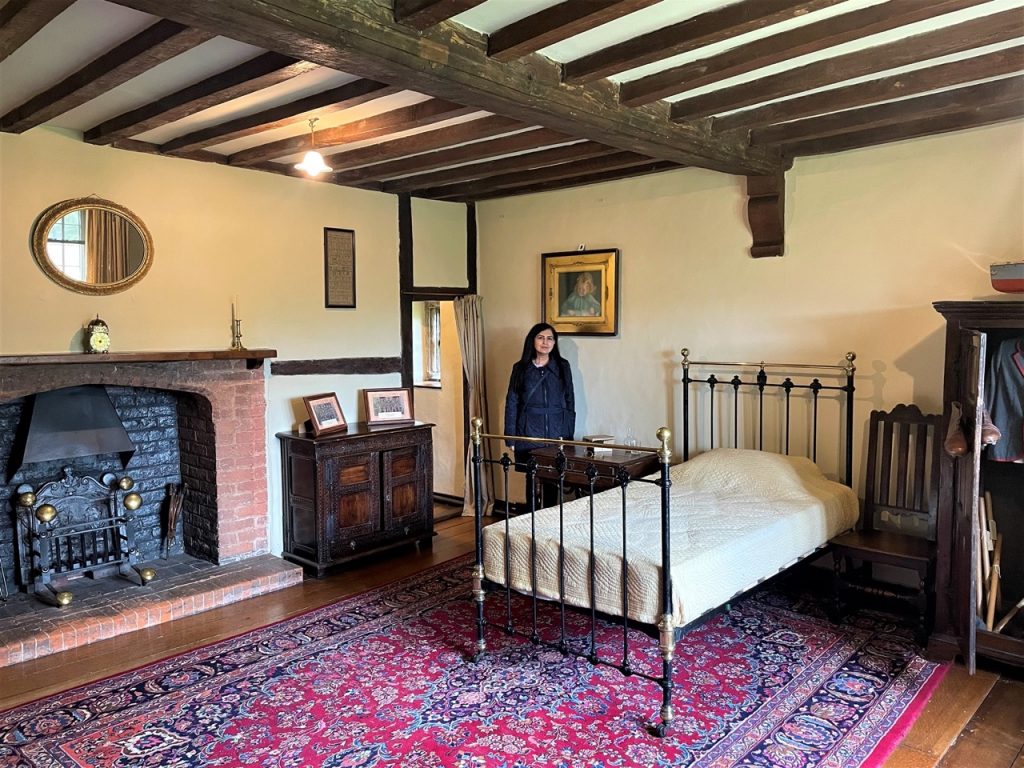
Writer in the Bateman’s bedroom of 3 times Prime Minister of Britain-Stanley Baldwin-Rudyard Kipling’s cousin
Kipling family rooms
The floor above holds the Dining room and Elsie’s Sitting room. Entering the well-lit Dining room I stepped into the Time machine to view Kiplings family relishing meals at fixed time prepared from the fruits and vegetables grown in their own garden with Rudyard Kipling in his old fashioned Tweeds feeding his 2 dogs, alongside!
The Volunteer informed that Rudyard loved spicy food, an old India habit but had to eat blander food due to an ulcer! Additionally, the leather wall- hangings were especially put in the Dining room as cloth ones absorbed the food-smell over the years!
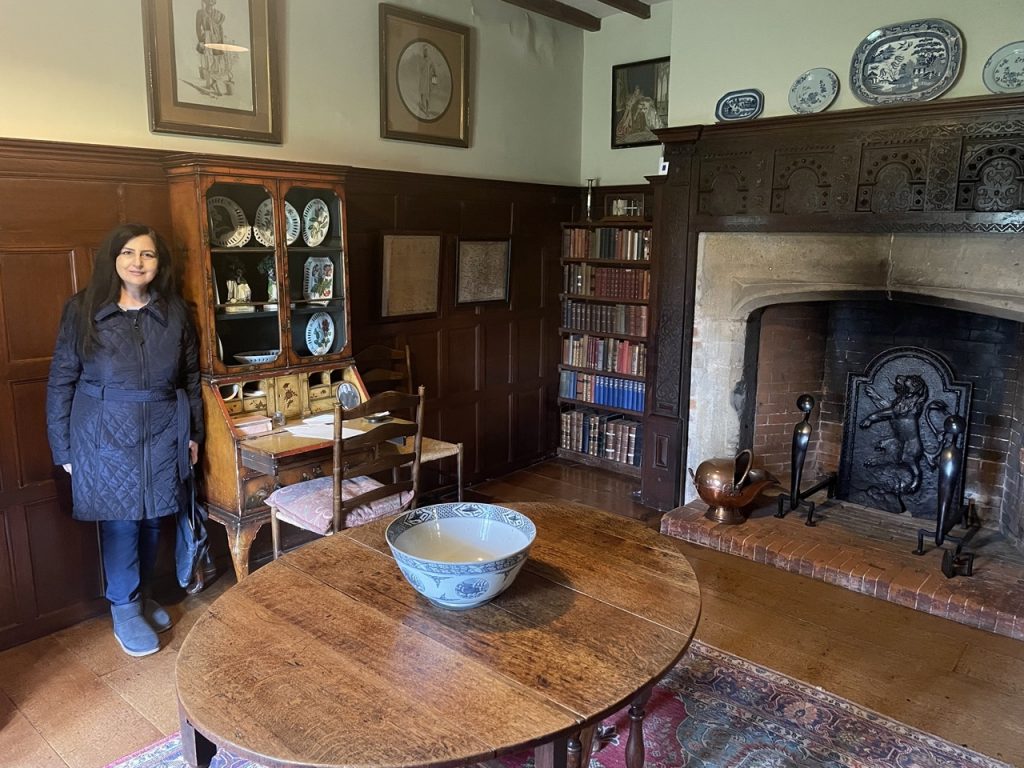
Writer in daughter Elsie’s Sitting- room with a special cast iron Fireplace; initially a schoolroom for all Kiplings children
On the other end of this floor is Rudyard Kipling’s surviving descendant Elsie Kipling Bambridge’s Sitting- room whose highlight is the Heraldic cast iron fireback – a typical production of Iron founders of Sussex Weald area! Initially this room was used as a Schoolroom for all Kipling children.
Completing the tour of the Bateman house we headed for the emerald greenery of 300 acres of gardens with interesting names, Orchards and Estate!
